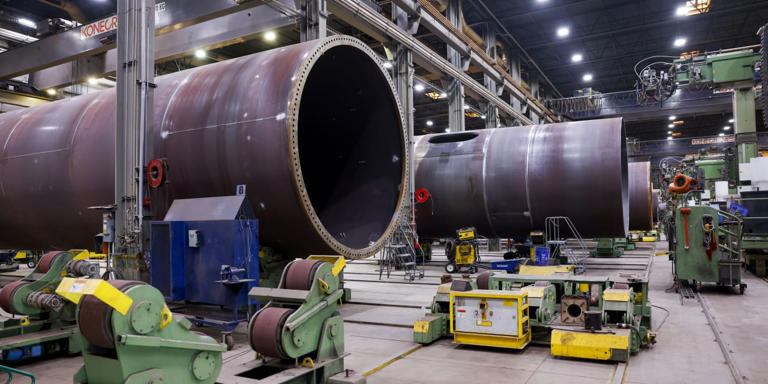The Institute for Supply Management’s (ISM) index of manufacturers fell to 47.8% in February, marking a two-month low compared to the previous month’s reading of 49.1%. This decline was primarily attributed to decreases in orders and an uptick in layoffs among American manufacturers. However, despite these setbacks, industry executives expressed optimism regarding future expansion prospects later in the year.
Economists surveyed by the Wall Street Journal had anticipated an ISM reading of 49.5%, indicating that the actual figure fell short of expectations.
A reading below 50% on the ISM index is interpreted as unfavorable for the industrial segment of the economy, suggesting contraction rather than expansion.
Manufacturers have faced their most challenging conditions since the Great Recession of 2007-2009, with the ISM index signaling contraction for 16 consecutive months.
However, despite this prolonged downturn, the broader economy has continued to expand, even amidst rising interest rates. Moreover, the prospect of the Federal Reserve potentially lowering borrowing costs later in the year has injected optimism for a potential recovery in manufacturing.
Timothy Fiore, chairman of the survey, noted that demand is showing early signs of recovery, indicating that companies represented in the survey are beginning to gear up for expansion.
Key points:
Production gauge: Declined by 2 points to 48.4%, indicating reduced manufacturing output.- New-orders index: Fell by 3.3 points to 49.2%, signaling a slowdown in new orders for manufactured goods.
- Employment barometer: Decreased by 1.2 points to 45.9%, marking its lowest level since last summer and indicating a decline in manufacturing employment.
- Prices-paid index: Dipped by 0.4 points to 52.5%, suggesting a slight moderation in inflationary pressures.
Looking ahead, there are mixed sentiments among industry executives regarding the outlook for manufacturing. A senior transportation executive expressed cautious optimism, acknowledging that the first quarter might be slower due to customer order adjustments but anticipating a strong performance for the remainder of 2024. This sentiment aligns with potential plans to revise growth projections upward in response to increased sales.
Conversely, an executive at a manufacturer of electrical products highlighted the challenges of meeting rising customer demand. Despite the pressure on production facilities and assembly lines, the increased sales signal positive momentum in the market. These contrasting perspectives underscore the dynamic nature of the manufacturing sector, where companies navigate evolving demand patterns and operational constraints to drive growth and profitability.
Market reaction: The Dow Jones Industrial Average and S&P 500 were mixed in Friday trades.
